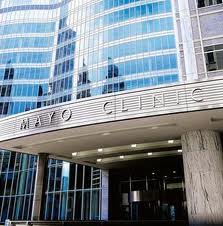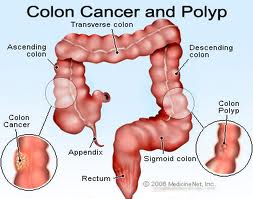Most don’t even come close to the woefully low official guidelines.

Our fellow herbivore in the wild ---the strongest animal in the world---getting plenty of protein and fiber and eating nothing but raw plants.
Yesterday, while thinking about my post for today, I got to thinking about fiber in our diet and why we have it. Then it occurred to me that it would appear that most creatures consume only one of two kinds of food in their natural diet—the diet that Nature intended for them to eat:
- Food with fiber—herbivores
- Food without fiber—carnivores
Herbivores get plenty of fiber — Carnivores get none (they don’t need any). Consider this:
Everything a herbivore eats has fiber; for the carnivore, there is zero fiber in any of their food.
In our case, most humans in the Western world have concluded that we’re omnivores because we will eat almost anything. But, while there are some omnivores in the wild; humans, and our ancestors, are not among them. Oh, our ancestors probably ate both meat and plants—because they could—not because it was what Nature intended for them to eat.
And as Michael Pollan says, this omnivorous tendency has gotten completely out of control—as our diets are now primarily comprised of “consumable food-like substances—not real food.” But Michael and I disagree on what is considered real food for humans. While he recommends mostly plants, he also thinks we need some animal protein and omega-3s from the animal kingdom.

Lion kills zebra and eats him while the blood is still warm---now that's a real carnivore. And he doesn't need to worry about fiber in his diet.
But, ultimately, I think that Michael Pollan will join me, Dr. Campbell, Esselstyn and others in declaring that we should be eating exclusively plants. That’s because of the massive energy requirement, environmental impact and the sheer unsustainability of trying to supply meat for all humans. It just ain’t gonna happen long-term.
There is no doubt in my mind that we are herbivores by design and that we will all be much healthier if we eat only whole plants, still in Nature’s package. And if we do that, we’ll all easily be getting well above the recommended guidelines for fiber in our diet.
Recommended guidelines. The Mayo Clinic and the American Dietetic Association agree on the following daily levels of fiber in the diet: 25 grams for women and 38 grams for men. The ADA acknowledges that the average consumption is only 15 grams, with less than half of that being delivered by whole plant foods, still in Nature’s package.
So, how can anyone be expected to be able to come close to those recommended numbers—even though they’re low? Simple Answer. By consuming a wide variety of whole plants each day, one can easily exceed fifty grams a day or more. As I stated in Chapter 1 of our book:
The American Dietetic Association reports that most of us don’t even come close to the recommended intake of twenty grams to thirty-five grams of fiber a day. While thirty-five grams of fiber would be a dramatic improvement for most people eating the typical Western diet, the fiber in a truly health-promoting optimal diet would be more than double that amount. On NutritionData.com, an analysis of a near 100 percent whole-foods, plant-based diet demonstrates that it typically delivers well over seventy grams of fiber per day. I simply added up the fiber in all of my meals of whole plants (fruits, vegetables, legumes, grains, nuts, and seeds) for my typical day. The total always exceeds seventy grams.
 Want to see how? Take a look at the following list of foods, several from each category of the various plant-based, whole foods. I went to nutritiondata.com yesterday and did this analysis of 13 of my favorite foods:
Want to see how? Take a look at the following list of foods, several from each category of the various plant-based, whole foods. I went to nutritiondata.com yesterday and did this analysis of 13 of my favorite foods:
Grams of fiber per 100 calories
- 7.70 — Carrots

- 9.18 — Broccoli
- 8.70 — Spinach
- 4.04 — Avocado
- 4.15 — Black Beans
- 4.23 — Edamame Beans
- 2.09 — Almonds
- 5.13 — Blueberries
- 3.37 — Pear

- 4.31 — Apple
- 3.45 — Whole grain pasta
- 2.61 — Oatmeal
- 1.85 — Brown Rice
4.67 grams/100 calories — the average of 13 items
At 2,000 calories/day of whole foods like these, one would consume an average of 93 grams of fiber—consistent with what I reported in our book. But what about the fiber content of other foods that you might be eating?

Lovely and tasty, olive oil is 100% fat and, has zero fiber and it is not a whole plant.
Foods with zero fiber per 100 calories:
- 0.00 — Olive oil (all oils)
- 0.00 — Cheese
- 0.00 — Chicken
- 0.00 — Fish
- 0.00 — Eggs
- 0.00 — Pork
- 0.00 — Beef
Zilch. All animal foods AND olive oil contain zero fiber. Dr. Esselstyn says that all oils (including olive) damage the endothelial cells of the arteries and should not be a part of a heart-healthy diet.
Even if we don’t “plan” to include olive oil in our diet, we’ll still get way too much of it without even trying. So, one of the real keys of 4Leaf eating is to not “plan” to have olive oil or animal products in our diet.
What do I mean by “planning?” I mean putting it in your grocery cart, keeping it in your home and ordering it in restaurants. In my case, I am occasionally guilty of dipping a small piece of whole wheat bread in a saucer of olive oil that the waiter has brought for the table without being asked. To be clear—I am not planning to have any olive oil, but sometimes it just happens.
 How important is fiber? Here’s what the Mayo Clinic has to say—followed by a link to their site:
How important is fiber? Here’s what the Mayo Clinic has to say—followed by a link to their site:
- Normalizes bowel movements. Dietary fiber increases the weight and size of your stool and softens it. A bulky stool is easier to pass, decreasing your chance of constipation. If you have loose, watery stools, fiber may also help to solidify the stool because it absorbs water and adds bulk to stool. For some, fiber may provide relief from irritable bowel syndrome.
- Helps maintain bowel integrity and health. A high-fiber diet may lower your risk of developing hemorrhoids, and small pouches in your colon (diverticular disease). Some fiber is fermented in the colon. Researchers are looking at how this may play a role in preventing diseases of the colon.
- Lowers blood cholesterol levels. Soluble fiber found in beans, oats, flaxseed and oat bran may help lower total blood cholesterol levels by lowering low-density lipoprotein, or “bad,” cholesterol levels. Epidemiologic studies have shown that increased fiber in the diet can reduce blood pressure and inflammation, which is also protective to heart health.
- Helps control blood sugar levels. Fiber, particularly soluble fiber, can slow the absorption of sugar, which for people with diabetes can help improve blood sugar levels. A diet that includes insoluble fiber has been associated with a reduced risk of developing type 2 diabetes.
- Aids in weight loss. High-fiber foods generally require more chewing time, which gives your body time to register when you’re no longer hungry, so you’re less likely to overeat. Also, a high-fiber diet tends to make a meal feel larger and linger longer, so you stay full for a greater amount of time. And high-fiber diets also tend to be less “energy dense,” which means they have fewer calories for the same volume of food.
 What about colon cancer? The Mayo Clinic said the results are mixed, but that’s because they don’t ever test a truly high-fiber diet—over 60 grams a day—from whole plants. Meanwhile, the following info on colorectal cancer was reported in an 11-11-11 article in USA Today.
What about colon cancer? The Mayo Clinic said the results are mixed, but that’s because they don’t ever test a truly high-fiber diet—over 60 grams a day—from whole plants. Meanwhile, the following info on colorectal cancer was reported in an 11-11-11 article in USA Today.
British and Dutch researchers analyzed 25 studies that included a total of nearly 2 million people. Compared with the lowest levels of fiber consumption, each 10 gram per day increase in intake of total dietary fiber and cereal fiber was associated with a 10 percent reduced risk of colorectal cancer.
Lower your risk of cancer by up to 70%. So, if you run the numbers on that finding, how much will your cancer risk be lowered if you went from the national average of 15 grams of fiber a day to 85? Looks to me like you’d reduce your risk by 70 percent. Pretty good deal, huh?
Wonder what it would be if those researchers had been reviewing studies where all of the fiber was coming from whole plants? We know that cultures of people like the Tarahumara who eat a very high-fiber, whole plant diet—have about a zero incidence of colon cancer…and they have no reading material in their restrooms.
(Mayo Clinic website) Dietary fiber: Essential for a healthy diet – MayoClinic.com
A related post from 10-11-11 FIBER. How much should we be eating?

 Follow us on Facebook and Twitter. Want to receive some occasional special news from us? You may wish to Join our periodic mailing list. For daily updates you can choose to “FOLLOW” at the top of the right column>>>>>>>>>>>>
Follow us on Facebook and Twitter. Want to receive some occasional special news from us? You may wish to Join our periodic mailing list. For daily updates you can choose to “FOLLOW” at the top of the right column>>>>>>>>>>>>
Also, for help in your own quest to take charge of your health, you might find some useful information at our 4Leaf page or some great recipes at Lisa’s 4Leaf Kitchen. Got a question? Let me hear from you at jmorrishicks@me.com.
If you’d like to order our book on Amazon, visit our BookStore now.

J. Morris Hicks, working daily to promote health, hope and harmony on planet Earth.
From the seaside village of Stonington, Connecticut – Be well and have a great day.
—J. Morris Hicks…blogging daily at HealthyEatingHealthyWorld.com
SHARE and rate this post below…One more thing, occasionally an unauthorized ad may appear beneath a blog post. It is controlled by WordPress (a totally free hosting service). I do not approve or personally benefit whatsoever from any ad that might ever appear on this site. I apologize and urge you to please disregard.


“…most creatures consume only one of two kinds of food in their natural diet—the diet that Nature intended for them to eat: Food with fiber—herbivores; Food without fiber—carnivores”
Ah-ha! You are correct and make a really good point! I had never thought of that. And it’s a good argument for why we are herbivores and not carnivores (or omnivores).
J.
Excellent article.
I like all of the factual info. (I also like the elephant picture munching on it’s greens – yummy)
Hope you have a great weekend!!
Bill